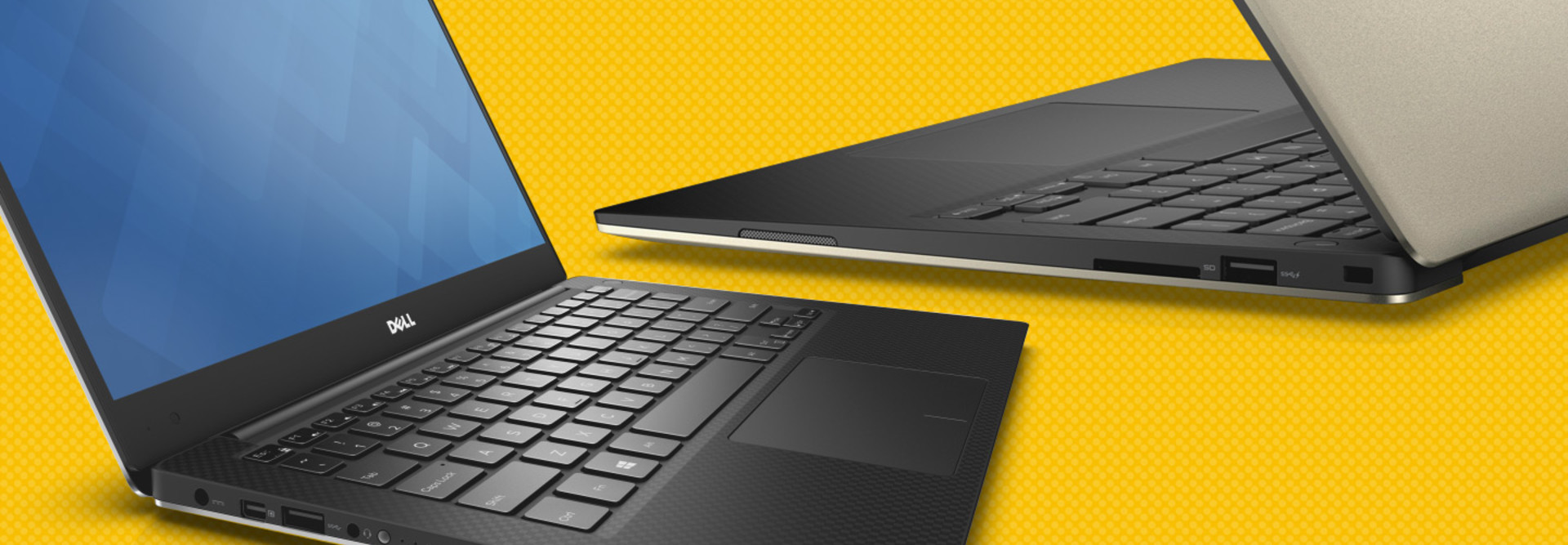Review: Dell XPS 13 Is Made for Those on the Move
The Dell XPS 13 (9350) was created with mobility in mind. It packs many productivity-enhancing features — like a nearly edge-to-edge display, an optimized touchpad, backlit keyboard and powerful processor — into a surprisingly light frame that is also significantly more rugged than others within its class.
With an LCD tuned to a higher color and contrast ratio compared with a standard display, the XPS 13 makes graphics, text and charts more readable in all types of lighting conditions, from office fluorescents to direct sunlight.
Display Is Smart and Sharp
We ran the DisplayMate visual benchmarks on the XPS 13 and found it to be extremely accurate when projecting colors. The XPS 13 was able to accurately display colors, especially those darker tones that tend to become less readable in bright lights, across a 256-step matrix with very subtle changes between hues.
The LCD also displays images natively at 1920X1080, so users get full HD resolution without any tweaking. And the fact that the bezel is so thin means that users can work right up to the edges of the 13.1-inch screen.
The Core i5 processer, backed up by 8 gigabytes of high-performing LPDDR3 SDRAM, worked with Microsoft Windows 10 Pro 64-bit OS to quickly open and process whatever files we threw at it.
The touchpad has been redesigned for responsiveness. The difference is easily noticeable to anyone who has dealt with skipping cursors and inaccurate clicks with touchpads in the past. The XPS 13 responded to every touch, drag and click that we tried out on it, without any errors. It’s so accurate that commands like pinching, zooming and panning work flawlessly, similar to manipulating a high-end smartphone.
The XPS 13 is a precision notebook designed for professional travelers. At a very reasonable $1,218 CDW•G price, it would be right at home with either a C-level executive or a rank and file worker who needs a reliable tool for the road and doesn’t want to be weighed down to get it.
Take It Along
Darkness is a surprisingly tough obstacle to overcome for most notebooks. Whether trying to take notes in a darkened classroom or working from home at night, most notebooks just can’t do much in those conditions. If you happen to be working on an application with a lot of bright colors or white space, you might be able to brighten the screen enough so that some light spills out to the keyboard, but it’s often not enough. This is never a problem with the XPS 13 because a backlit keyboard is standard. When the lights went out, we simply activated the backlight and could see every key clearly. Features like that on a notebook are not very common at this price point, so it was a nice surprise to find that we no longer had to be afraid of the dark.
Sunlight presents other problems. Sitting outside or in very bright classroom settings may mean users have no control over where the sun shines in. If those beams of light fall on the screen, normally users are out of luck. While no notebook works well in direct sunlight, the XPS 13 is at least passable. The screen coating knocks the light levels down somewhat and eliminates glare, but that alone does not get the job done. Dell has configured the XPS 13’s LCD with higher contrast and color ratios so that images show up much better in bright lights. Sitting beside a similar notebook without the same technology, we found we were able to read email on the XPS 13 with just minor squinting, while text was completely obscured on the second unit.
The addition of the solid state hard drive is another condition-defying feature, since the lack of moving parts makes the XPS much less susceptible to bumping around while on the move. All of these features make the Dell XPS 13 a great companion for mobile users on the go.









